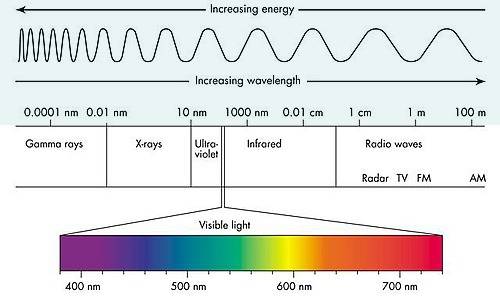
Ultraviolet and Infrared
Explanation:
Electromagnetic spectrum shows all type of EM waves basis their frequency and wavelength. It contains EM waves from radio waves having the smallest frequency to gamma rays having maximum frequency. Through an optical telescope Mike can observe only the visible part of the spectrum which is just 7% of the complete spectrum.
The closest to the frequency range of visible light lies Ultraviolet (UV) and Infrared rays. UV rays have higher frequency than visible light and IR rays have lesser frequency.